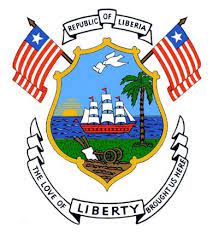Liberia
Liberia Home

Destination Liberia, the "Land of the Free" a tropical country in West Africa with a spectacular coastline at the North Atlantic Ocean. Liberia covers an area of 111,369 km² (43,000 sq mi), making it somewhat larger than Bulgaria or slightly larger than the U.S. state of Tennessee.
The country has a population of about 4.5 million people (in 2015). The capital and largest city are Monrovia, (named after, no not Marilyn Monroe, but James Monroe, the fifth President of the United States (1817–1825)). The country's major cities are located along the coast like the port cities of Harper and Buchanan.
Spoken languages are English (official) and an English-based pidgin (Liberian English), plus several indigenous languages.
Liberia is one of the poorest countries in the world with a high unemployment rate (85%) and rampant corruption at almost every level of the Liberian government. The country is recovering from a 14-year civil war where 250,000 people were killed and many thousands more fled the fighting. In 2014 the country was also affected by the worst Ebola epidemic in history.
Background:
Eight years of civil strife were brought to a close in 1997 when free and open presidential and legislative elections were held. President TAYLOR held strong executive power with no real political opposition. Years of fighting, coupled with the flight of most businesses, have disrupted formal economic activity. An unsettled domestic security situation has slowed the process of rebuilding the social and economic structure of this war-torn country. In 2001, the UN-imposed sanctions on Liberian diamonds, along with an arms embargo and a travel ban on government officials, for Liberia's support of the rebel insurgency in Sierra Leone.
Renewed rebel activity has further eroded stability and economic activity. An August 2003 peace agreement ended the war and prompted the resignation of President Charles TAYLOR, who faces war crimes charges in The Hague related to his involvement in Sierra Leone's civil war. After two years of rule by a transitional government, democratic elections in late 2005 brought President Ellen JOHNSON SIRLEAF to power. The UN Mission in Liberia (UNMIL) maintains a strong presence throughout the country, but the security situation is still fragile and the process of rebuilding the social and economic structure of this war-torn country will take many years.
Sign in to add your comment.
Suggested Pages
Official Name:
Republic of Liberia
Short form: Liberia
ISO Country Code: lr, LBR
Time:
Local Time = UTC +0h
Country Calling Code: +231
Capital City: Monrovia (pop. 600 000)
Other Cities: Buchanan (est. 300 000), Ganta (est. 290 000), Gbarnga (est. 150 000), Kakata (est. 100 000), Harbel (est. 136 000)
Government:
Type: Republic.
Independence: 26 July 1847 (from American Colonization Society).
Constitution: 6 January 1986.
Geography:
Location: Western Africa, bordering the North Atlantic Ocean, between Cote d'Ivoire and Sierra Leone.
Area: 111,369 km² (43,000 sq. mi.)
Terrain: Three areas--Mangrove swamps and beaches along the coast, wooded hills and semideciduous shrublands along with the immediate interior, low mountains in the northeast, dense tropical forests and plateaus in the interior. Liberia has 40% of West Africa's rainforest.
Climate: tropical; hot, humid; in winter: dry with hot days and cool to cold nights; dust-laden harmattan winds blow from the Sahara (December to March) in summer: wet, cloudy with frequent heavy showers.